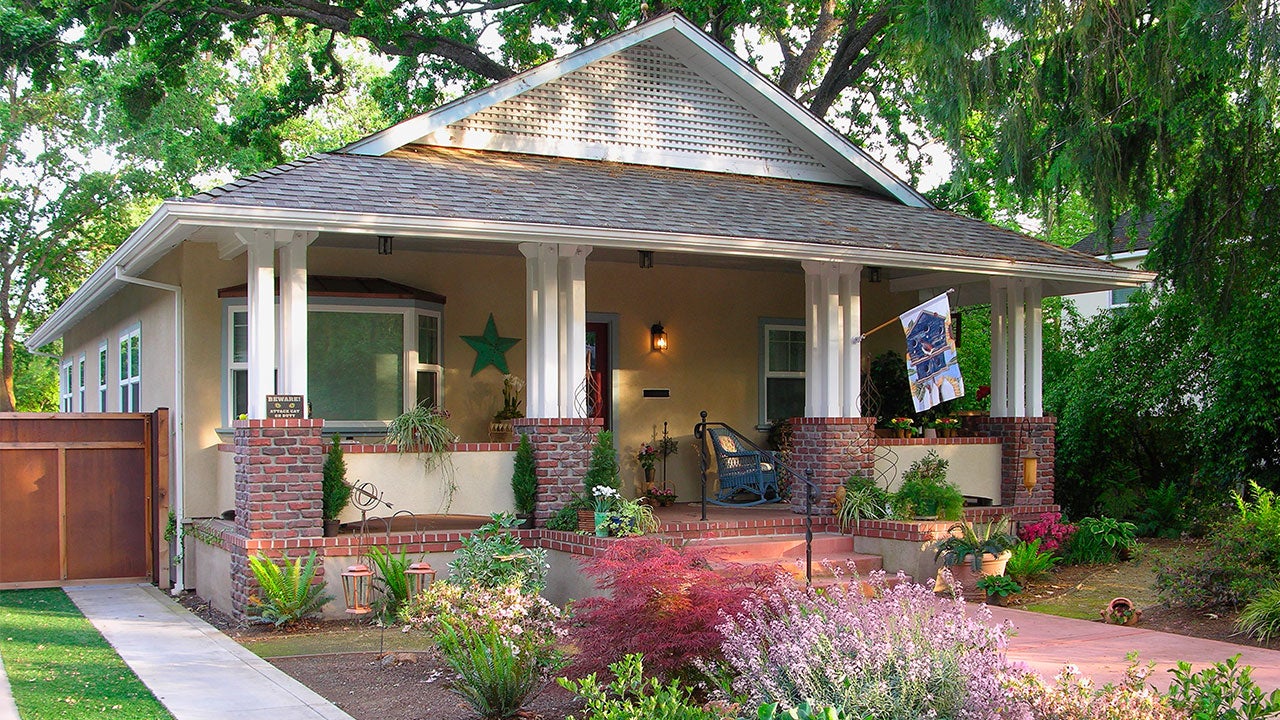What is a bridge loan and how does it work?

Key takeaways
- Bridge loans are short-term loans that help cover costs during transitional periods, most often if you must buy a new home before selling your old one.
- Like a mortgage, your home may serve as collateral for a bridge loan. Some bridge loans allow you to pledge other assets instead.
- Many lenders only offer bridge loans if you work with them to finance your next home purchase.
What is a bridge loan?
A bridge loan — also referred to as a gap loan or a swing loan — is a short-term loan that typically helps with financing when moving from one house to another. Bridge loans are often secured by your current home, but some allow for other types of assets.
You might use a bridge loan if you need a new home before your old one has sold, and you need extra cash for a down payment and the additional monthly mortgage payment. Real estate investors who flip properties often rely on bridge loans, as well.
How does a bridge loan work?
Bridge loans vary widely in structure, cost and terms. If you qualify, you could borrow a relatively large sum, anywhere from tens of thousands of dollars to more than $1 million.
Some of the characteristics of a bridge loan include:
-
Purpose: A bridge loan might involve cashing out equity from your current home and putting that toward a down payment on a new property — or, simply taking out a bigger mortgage for the new property. Another type of bridge loan uses both homes as collateral.
-
Duration: Bridge loan terms are usually six- to 12-months.
-
Terms: With a bridge loan, you’ll usually make interest-only payments to start and then owe a balloon payment at the end of the loan term. In some cases, you may not need to make any upfront payments until you sell your home.
-
Rates: Rates can range anywhere from the prime rate to the prime rate plus 2 percentage points.
Bridge loan example
Say your current home is worth $300,000 and you have a $50,000 balance on your mortgage. If you got a bridge loan for $70,000, you could use $50,000 to pay off your mortgage and another $2,000 for the loan’s closing costs. Then you’d have $18,000 for your next purchase.
Bridge loan vs. traditional loan
The primary difference between a bridge loan and a traditional loan is the timeline for repayment. The term on a bridge loan typically lasts six to 12 months, while the term on a mortgage can be up to 30 years. In addition, lenders fund bridge loans faster than traditional mortgages — sometimes in as little as two weeks.
When should you get a bridge loan?
Bridge loans can be a valuable funding option for certain people, including in the following instances:
- Homeowners purchasing a new home in need of down payment funds. A bridge loan can be helpful in cases when you’re buying a new home but have not yet sold your existing home. The funds from the loan can help you make a down payment on your new home.
- Investors flipping homes: If you’re in the business of purchasing fixer-upper homes that you renovate and sell quickly, a bridge loan can be a helpful funding option.
Pros of bridge loans
- Cash in hand quickly: A bridge loan is good for time-sensitive or quick transactions. Some lenders can fund in as few as two weeks.
- Payment flexibility: You can defer payments until your current home sells, or make interest-only payments.
- No contingency needed: Rather than place a contingency on your new home purchase that your old home must sell for financial reasons, a bridge loan provides the funds to settle on your new home even if the old one hasn’t sold yet.
Cons of bridge loans
- Equity requirements: Many lenders require at least 20 percent equity in the current home. This can be a barrier to entry for some.
- Financing requirements: The lender might only extend a bridge loan if you agree to use it for your new home mortgage.
- Higher rates: Bridge loans usually have higher interest rates and APRs compared to traditional mortgages.
- Limited borrower protections: Bridge loans rarely come with protections for the loan holder if the sale of the old home falls through. In such a case, the lender could go as far as to foreclose on the old property after the bridge loan extensions expired, or if you were to have trouble selling your current home.
Bridge loan requirements
Like with other types of loans, you’ll have to meet some requirements to qualify for a bridge loan, including those around:
- Credit score: Because bridge loan lenders have much more underwriting flexibility, you might be able to get a bridge loan with a credit score in the 500s.
- Debt-to-income (DTI) ratio: Some bridge loan lenders allow a DTI ratio as high as 50 percent.
- Equity: If you’re taking on a traditional bridge loan, many lenders require at least 15 to 20 percent equity in your current home.
How to apply for a bridge loan
The process of applying for a bridge loan is similar to applying for a regular mortgage:
- Determine your home equity level. This is the difference between the value of your current home and the outstanding balance of your current mortgage. Most lenders only allow you to borrow up to 80 percent or 85 percent of your equity.
- Shop for a lender. Many mortgage lenders don’t offer bridge loans, but some that do include CoreVest, Guild Mortgage and Knock.
- Understand your options. When you find a lender you like, contact a loan officer to learn about requirements and how their bridge loan program works — remember, not all lenders structure bridge loans the same way.
Bridge loan alternatives
If you’re concerned about taking out a bridge loan, consider one of these other options:
- Home equity loan: If you know exactly how much you need to borrow for a down payment on your new home, a home equity loan might be a solution. You’ll receive a lump sum, and you may repay it over as many as 20 or 30 years. Home equity loans also typically have more favorable interest rates than bridge loans.
- HELOC: A home equity line of credit (HELOC) is similar to a home equity loan in that it draws on the equity of your current home, but it functions like a credit card. You can take out money as needed, up to a certain limit. You’re only charged interest if you access the line of credit. However, you may be ineligible for a HELOC on your current home if it’s for sale.
- 80/10/10 loan: With an 80/10/10 loan, also known as a piggyback loan, you put down 10 percent and receive two mortgages: the first for 80 percent of the purchase price and the second for 10 percent. You can use the smaller mortgage as a bridge loan alternative and then pay off the second mortgage when your current home sells.
FAQ
Why we ask for feedback Your feedback helps us improve our content and services. It takes less than a minute to complete.
Your responses are anonymous and will only be used for improving our website.
You may also like

What is a student loan grace period?

How many personal loans can you have at once?

What is a startup business loan? How does it work?

What is a secured loan and how does it work?



